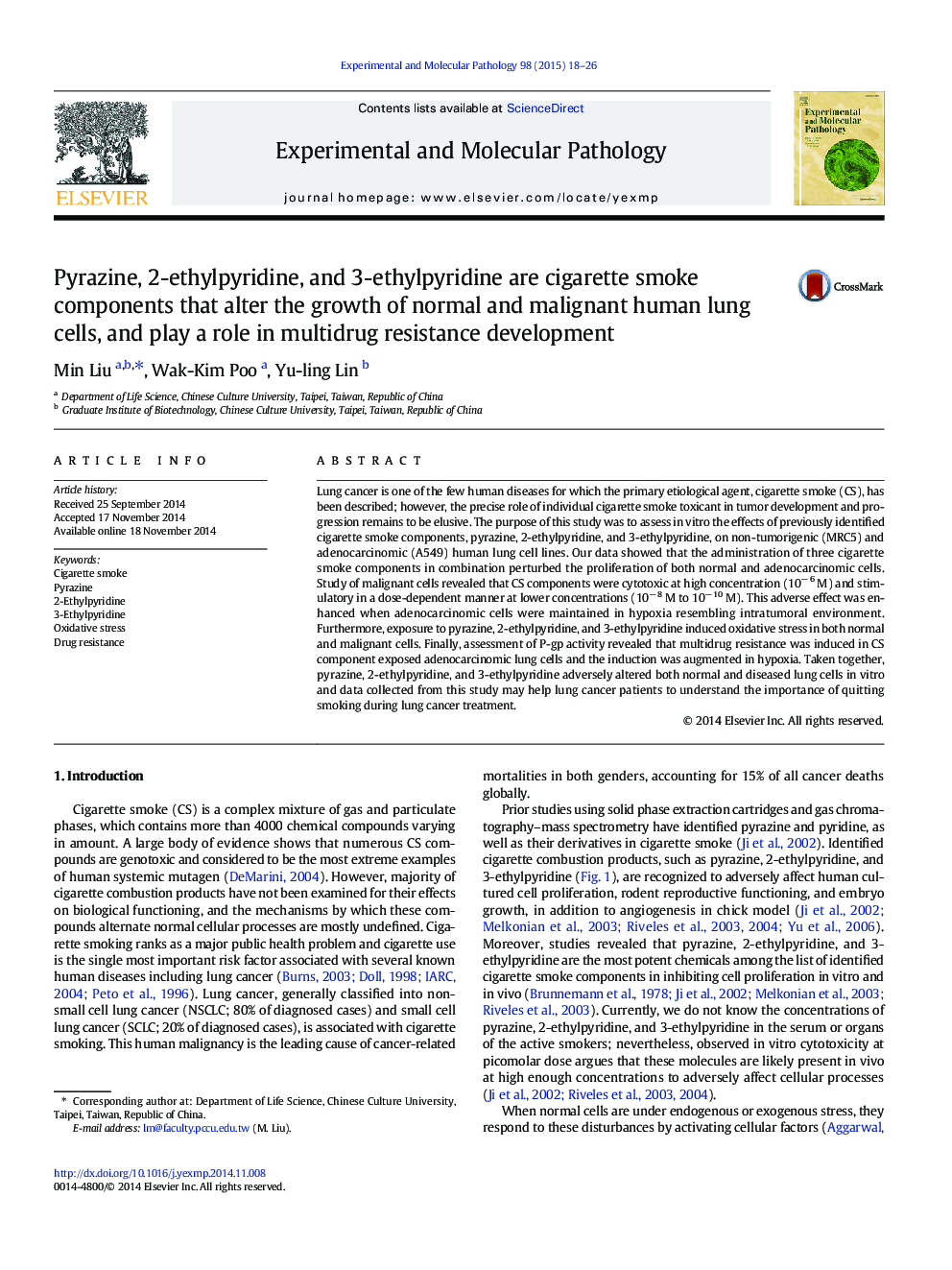| کد مقاله | کد نشریه | سال انتشار | مقاله انگلیسی | نسخه تمام متن |
|---|---|---|---|---|
| 2775046 | 1152306 | 2015 | 9 صفحه PDF | دانلود رایگان |

• Pyrazine, 2-ethylpyridine, and 3-ethylpyridine are cigarette smoke components.
• Cigarette smoke components alter cell proliferation of normal/malignant lung cells.
• Cigarette smoke components induce oxidative stress in normal/malignant lung cells.
• Cigarette smoke components involve in drug resistance development in malignant cells.
Lung cancer is one of the few human diseases for which the primary etiological agent, cigarette smoke (CS), has been described; however, the precise role of individual cigarette smoke toxicant in tumor development and progression remains to be elusive. The purpose of this study was to assess in vitro the effects of previously identified cigarette smoke components, pyrazine, 2-ethylpyridine, and 3-ethylpyridine, on non-tumorigenic (MRC5) and adenocarcinomic (A549) human lung cell lines. Our data showed that the administration of three cigarette smoke components in combination perturbed the proliferation of both normal and adenocarcinomic cells. Study of malignant cells revealed that CS components were cytotoxic at high concentration (10− 6 M) and stimulatory in a dose-dependent manner at lower concentrations (10− 8 M to 10− 10 M). This adverse effect was enhanced when adenocarcinomic cells were maintained in hypoxia resembling intratumoral environment. Furthermore, exposure to pyrazine, 2-ethylpyridine, and 3-ethylpyridine induced oxidative stress in both normal and malignant cells. Finally, assessment of P-gp activity revealed that multidrug resistance was induced in CS component exposed adenocarcinomic lung cells and the induction was augmented in hypoxia. Taken together, pyrazine, 2-ethylpyridine, and 3-ethylpyridine adversely altered both normal and diseased lung cells in vitro and data collected from this study may help lung cancer patients to understand the importance of quitting smoking during lung cancer treatment.
Journal: Experimental and Molecular Pathology - Volume 98, Issue 1, February 2015, Pages 18–26